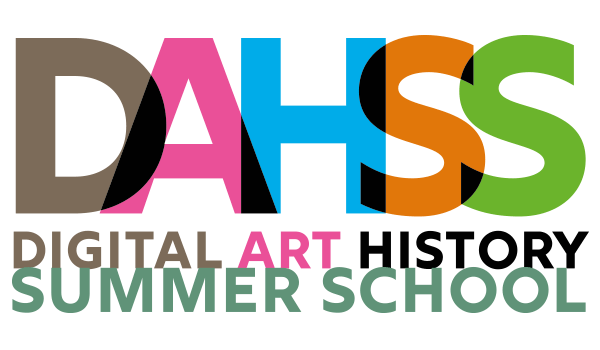Schedule
| Monday | |
| 9:00 – 9:30 | Reception of Participants |
| 9:30 – 11:15 | General Presentation |
| 11:15 – 11:30 | Break |
| 11:30 – 13:00 | Track Presentations |
| 13:00 – 14:00 | Lunch Break |
| 14:00 – 15:00 | Opening Talk – Maria Giulia Dondero (Directrice de recherches du Fonds de la Recherche Scientifique-FNRS Professeure Université de Liège) |
| 15:00 – 16:30 | Introduction to Each Track |
| 16:30 – 17:00 | First Wrap Up |
| Tuesday | Wednesday | Thursday | Friday | |
| 9:30 – 11:00 | Leo Impett Presentation + Discussion | Iacopo Neri Presentation + Discussion | Edward Anderson Presentation + Discussion | Eryk Salvaggio Presentation + Discussion |
| 11:15 – 11:30 | Break | Break | Break | Break |
| 11:30 – 13:00 | Tracks | Tracks | Tracks | Tracks |
| 13:00 – 14:00 | Lunch Break | Lunch Break | Lunch Break | Lunch Break |
| 14:00 – 16:30 | Tracks | Tracks | Tracks | Tracks |
| 16:30 – 17:00 | Wrap Up | Wrap Up | Wrap Up | Wrap Up |
| Saturday | |
| 10:00 – 12:30 | Project Presentations |
| 12:30 – 13:00 | Wrap up |
2024 Edition
The course has a double orientation: theoretical exchange and critical discussions will be combined with practical sessions (lab-based sessions) through which participants will work collaboratively on common projects. Each participant can only join one of the tracks. During your application, you should select the tracks in your preferred order. Take into consideration that participants cannot switch tracks once they are registered in the summer school.
Hours: 50
September 2nd – September 7th
DAHSS Program
Track A:
Visual AI for Visual Culture. New tools/old critique
Led by Leonardo Impett, (University of Cambridge), in track A, we will think about applications of AI and computer vision to visual culture and art history. Thinking about ‘the visual’ is a major difference between digital art history and ‘digital humanities on art’. We will look at the long history of the computer analysis of images from the late 1980s to today, as well as thinking about the hidden biases, ideologies, and philosophies that underpin computer vision systems today. We’ll learn to use both basic image processing tools and more sophisticated AI and machine learning algorithms to search within, organise, or study genuinely big image datasets. We’ll explore what this tells us about the image datasets, and about the algorithms. We’ll also be looking at generative image systems like Midjourney and DALL·E, and asking how we might use them art-historically.
Track B:
Art on the Web: Creating Cultural Heritage Knowledge Networks
Led by Edward Anderson (Rijksmuseum), in Track B, we will share practical approaches for encoding, discovering and publishing knowledge on the Semantic Web. The programme will explore techniques and technologies for enhancing the accessibility and richness of cultural heritage data in ways that encourage collaboration and polyvocality. We will study how the Resource Description Framework (RDF) can be used alongside the Web Ontology Language (OWL), the Shapes Constraint Language (SHACL) and SPARQL to model, describe, transform, validate and query interconnected datasets. We’ll also learn to apply cultural heritage-focused metadata models designed for publishing Linked Open Data, such as CIDOC-CRM and Europeana Data Model (EDM); as well as implementing APIs for distributing semantic data, like Linked Art and the International Image Interoperability Framework (IIIF).
Track C:
Cartographies of Humanities
Led by Iacopo Neri (DVS – IAAC), in this track, we will explore the transformative potential of spatial analytics and geodata within the realm of digital humanities, creating cartographies to explore the territorial dimensions of culture, ecology and history. Our journey begins with a foundational understanding of GIS, geodata, and cartography, grounding ourselves in the essential tools and techniques that underpinned spatial analysis from historical maps to contemporary web-based platforms. By engaging with open-source software and creative coding, we will gain hands-on experience in manipulating and visualising geospatial data. As we delve deeper, we will navigate the vast landscape of globally covering open data sources – from the distant lens of Google Earth Engine to the specificity of OpenStreetMap – mapping ecological and social dynamics at various scale. Our focus will be on integrating these diverse data sources with research-specific data layers, enriching our cultural and historical investigations with compelling cartographical material.
Track D:
The Archive Makes the Image
Led by Eryk Salvaggio, Track C revolves around the question: How do we read an image made by an artificial intelligence system? We will explore the relationships between cultural heritage archives and AI training datasets, examining how collections shape the images produced by artificial intelligence systems. Participants will learn how to critically assess AI images from the position of archivists and art historians, reconnecting them to longer histories of archival critique and generative art. Students will create images that surface traces of archives, examine datasets, and create projects that explore or critique the algorithmic curation of cultural heritage in the production of synthetic images.
Plenary sessions
No matter what track you pick, you will also see what students do in other tracks in our daily plenary session. In the plenary sessions, notable alumni of the DAHSS program will also share feedback and observations about how DAHSS helped them in their work.
Keynotes
During the week, we will have lectures given by keynote speakers who will share their work on different aspects of Digital Art History.

